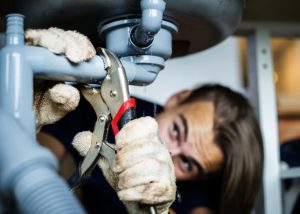Locating Hidden Water Line Leaks: 6 Clever Methods
Locating Hidden Water Line Leaks: 6 Clever Methods
Blog Article
Are you currently on the lookout for critical info concerning Finding hidden leaks?

Early discovery of leaking water lines can mitigate a possible calamity. Some small water leaks may not be noticeable.
1. Take A Look At the Water Meter
Every house has a water meter. Inspecting it is a proven way that helps you find leaks. For beginners, switch off all the water sources. Guarantee no person will flush, make use of the faucet, shower, run the cleaning machine or dishwashing machine. From there, most likely to the meter and watch if it will certainly transform. Since nobody is utilizing it, there should be no motions. That indicates a fast-moving leakage if it moves. Furthermore, if you spot no changes, wait a hr or two and check back again. This means you might have a slow-moving leakage that might also be underground.
2. Examine Water Consumption
If you spot abrupt changes, regardless of your consumption being the very same, it implies that you have leakages in your plumbing system. A sudden spike in your expense indicates a fast-moving leak.
A consistent increase every month, even with the very same habits, reveals you have a slow-moving leak that's also gradually rising. Call a plumber to completely check your residential property, particularly if you feel a cozy area on your flooring with piping beneath.
3. Do a Food Coloring Examination
When it comes to water intake, 30% comes from bathrooms. If the color somehow infiltrates your dish during that time without flushing, there's a leakage between the container and dish.
4. Asses Outside Lines
Do not fail to remember to inspect your outdoor water lines too. Needs to water leak out of the connection, you have a loosened rubber gasket. One small leak can waste bunches of water as well as spike your water expense.
5. Assess the circumstance and examine
Homeowners need to make it a practice to examine under the sink counters as well as also inside cupboards for any bad odor or mold and mildew growth. These two red flags show a leak so punctual attention is needed. Doing regular examinations, even bi-annually, can conserve you from a significant problem.
A lot more importantly, if you recognize your residence is already old, maintain a watchful eye on your heaters, hose pipes, pipelines and so on. Check for stainings as well as deteriorating as many pipes and also home appliances have a life span. They will certainly also normally weaken as a result of tear and also use. Don't wait for it to intensify if you believe leaking water lines in your plumbing system. Call an expert plumber immediately so you do not wind up with a dreadful mess in your home.
Early detection of leaking water lines can minimize a potential disaster. Some little water leakages might not be noticeable. Checking it is a guaranteed means that assists you uncover leakages. One small leak can lose loads of water and also increase your water expense.
If you think dripping water lines in your plumbing system, don't wait for it to rise.
WARNING SIGNS OF WATER LEAKAGE BEHIND THE WALL
PERSISTENT MUSTY ODORS
As water slowly drips from a leaky pipe inside the wall, flooring and sheetrock stay damp and develop an odor similar to wet cardboard. It generates a musty smell that can help you find hidden leaks.
MOLD IN UNUSUAL AREAS
Mold usually grows in wet areas like kitchens, baths and laundry rooms. If you spot the stuff on walls or baseboards in other rooms of the house, it’s a good indicator of undetected water leaks.
STAINS THAT GROW
When mold thrives around a leaky pipe, it sometimes takes hold on the inside surface of the affected wall. A growing stain on otherwise clean sheetrock is often your sign of a hidden plumbing problem.
PEELING OR BUBBLING WALLPAPER / PAINT
This clue is easy to miss in rooms that don’t get much use. When you see wallpaper separating along seams or paint bubbling or flaking off the wall, blame sheetrock that stays wet because of an undetected leak.
BUCKLED CEILINGS AND STAINED FLOORS
If ceilings or floors in bathrooms, kitchens or laundry areas develop structural problems, don’t rule out constant damp inside the walls. Wet sheetrock can affect adjacent framing, flooring and ceilings.
https://www.servicemasterbyzaba.com/blog/how-to-detect-water-leakage-in-walls/

I came across that post on Top leak detection hacks while browsing the web. If you enjoyed reading our blog posting if you please don't forget to pass it around. Many thanks for taking the time to read it.
Estimate Report this page